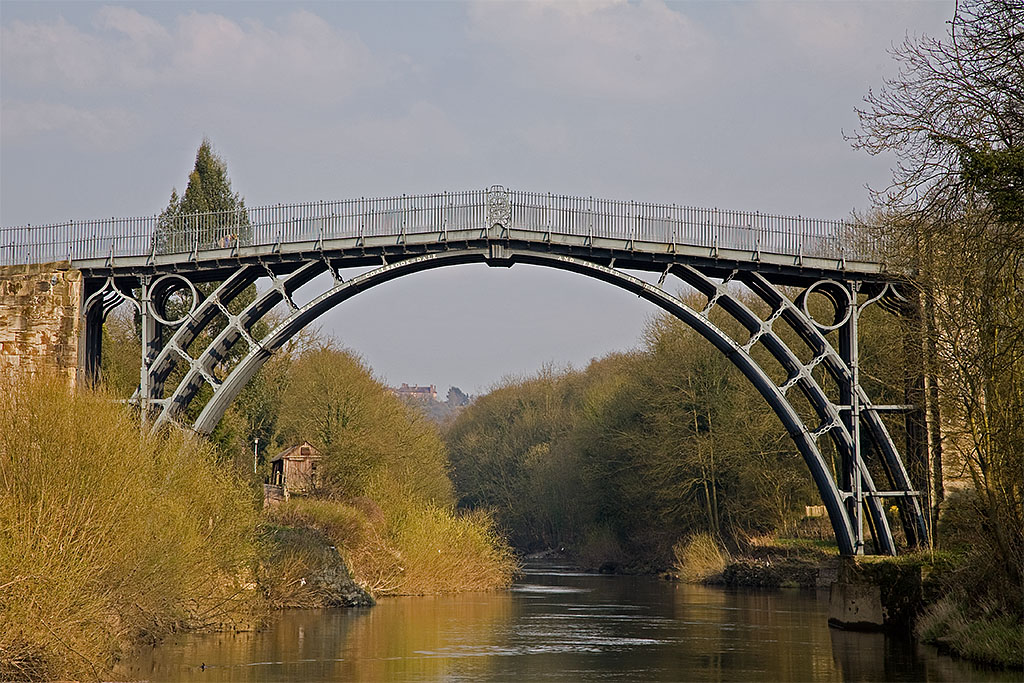Underwater bridge inspection is a critical process in maintaining the safety and longevity of bridges that span waterways. This guide provides a detailed overview of underwater bridge inspection, including its importance, regulatory requirements, methods and technologies, safety considerations, and real-world case studies. By understanding these aspects, bridge owners, engineers, and inspection teams can ensure that underwater components of bridges are properly maintained and that public safety is prioritized.
1. Introduction
What is Underwater Bridge Inspection?
Underwater bridge inspection involves examining the submerged components of a bridge, such as piers, abutments, foundations, and other structural elements below the waterline. These inspections are essential because many critical structural components are not visible from above the water. The primary goal is to identify signs of deterioration, damage, or structural weaknesses that could compromise the bridge’s integrity.
Why is it Important?
- Structural Integrity: Many bridge failures occur due to issues below the water surface, such as scour (erosion of sediment around bridge foundations) or deterioration of underwater components. Regular inspections help detect these issues early.
- Public Safety: Bridges are vital infrastructure, and failures can have catastrophic consequences. Underwater inspections ensure bridges remain safe for public use.
- Cost-Effectiveness: Early detection of problems allows for timely repairs, preventing more expensive and extensive rehabilitation or replacement.
- Regulatory Compliance: Underwater inspections are mandated by national and international standards, such as the National Bridge Inspection Standards (NBIS) in the United States, to ensure consistent safety across all bridges.
Brief History and Regulatory Background
The need for underwater bridge inspections became evident after several high-profile bridge failures in the mid-20th century. In the United States, the Federal-Aid Highway Act of 1968 established the NBIS, which set the foundation for systematic bridge inspection programs. Over time, these standards have evolved to include specific requirements for underwater inspections, reflecting the growing understanding of the risks associated with submerged bridge components.
2. Regulatory Requirements
National Bridge Inspection Standards (NBIS)
The NBIS, established by the Federal Highway Administration (FHWA), sets the framework for bridge inspections in the United States. Key points include:
- Inspection Frequency:
- Routine inspections (above water): Every 24 months.
- Underwater inspections: Every 60 months, though this can vary based on risk assessments (e.g., 24, 36, 60, or 72 months).
- Additional inspections may be required after significant events like floods, vessel impacts, or debris accumulation.
- Qualifications:
- Inspectors must be certified and trained in bridge inspection techniques.
- Divers conducting underwater inspections must be certified in scuba diving and have expertise in commercial hard-hat diving techniques. They must also be trained in underwater inspection procedures, often through programs like those offered by the National Highway Institute (NHI).
- Documentation:
- Inspection reports must be detailed, including visual documentation (e.g., photos, videos) and measurements.
- Critical findings that could affect public safety must be reported immediately to relevant authorities.
Global Standards
While NBIS is specific to the U.S., other countries have similar standards. For example:
- In Europe, the European Union’s Directive on Infrastructure for Spatial Information (INSPIRE) includes guidelines for bridge inspections.
- International standards like those from the International Organization for Standardization (ISO) also provide frameworks for infrastructure inspection.
| Aspect | U.S. NBIS Requirement | Global Example |
|---|---|---|
| Frequency | Every 60 months (underwater) | Varies by country, often 5-7 years |
| Qualifications | Certified divers and engineers | Licensed engineers with diving certifications |
| Documentation | Detailed reports with visuals | Comprehensive reports, often digital |
3. Methods and Technologies
Underwater bridge inspections can be conducted using traditional methods or modern technologies, depending on the complexity of the inspection and site conditions.
Levels of Inspection
Underwater inspections are categorized into three levels, as defined by the FHWA:
- Level I: A visual and tactile inspection of 100% of the submerged surfaces. This includes a close examination of all underwater components to detect scour, deterioration, or other defects. If water clarity is poor, inspectors may use their hands to physically check bridge members.
- Level II: A more detailed inspection than Level I, including cleaning marine or aquatic growth from at least 10% of the bridge members. This level is used when additional information is needed beyond a basic visual check.
- Level III: The most detailed inspection, used when structural integrity is compromised or before rehabilitation. It involves extensive cleaning, detailed measurements, and nondestructive testing (e.g., ultrasonics, sample coring). This level is escalated from Level I or II if a deficiency is found that could affect load-carrying capacity.
| Level | Scope | Techniques | Use Case |
|---|---|---|---|
| I | Visual/tactile, 100% surfaces | Visual examination, probing | Routine checks, scour detection |
| II | Detailed, cleaning 10% members | Cleaning, detailed visual | Moderate concerns, growth removal |
| III | Extensive, testing | Cleaning, measurements, NDT | Structural issues, pre-rehabilitation |
Traditional Methods: Diver Inspections
- Divers physically inspect underwater components, using visual, tactile, and sometimes probing techniques.
- Challenges include poor visibility, strong currents, and safety risks for divers.
- Divers must be highly trained and certified, often as professional engineers with additional dive certifications.
Modern Technologies
To address the limitations of traditional diver inspections, several advanced technologies are now used:
- Remotely Operated Vehicles (ROVs):
- Equipped with high-resolution cameras, lights, and sometimes lasers for defect quantification.
- Can operate in turbid waters and hazardous conditions, reducing risk to divers.
- Example: Planys Technologies uses ROVs for underwater inspections, providing detailed visual data and corrosion monitoring (Planys Technologies).
- Unmanned Surface Vehicles (USVs):
- Operated remotely from a safe location, USVs can collect data on scour and underwater conditions.
- Example: The Michigan Department of Transportation used a USV for real-time scour studies, enhancing safety and efficiency (Ayres Associates).
- Sonar and Imaging Technology:
- Sonar systems (e.g., multibeam, side-scan sonar) create detailed maps of underwater structures and riverbeds.
- Can detect scour depth and structural defects even in poor visibility.
- Advanced systems may integrate AI for automated defect detection.
- FHWA has published guidelines on using sonar for underwater inspections, emphasizing its role in supplementing diver inspections (FHWA Bridge Inspection).
- Underwater 3D Scanning:
- Products like UVision’s UScanner can generate photorealistic and measureable 3D models of bridge structures and riverbeds.
- Can detect scour depth and structural defects in high detail
These technologies not only improve safety by reducing the need for divers in dangerous conditions but also enhance the accuracy and efficiency of inspections.
4. Safety Considerations
Safety is paramount in underwater bridge inspection due to the hazardous nature of the environment and the critical role of divers.
Training and Certification
- Divers must be certified in scuba diving and commercial hard-hat diving techniques.
- They should also have specialized training in underwater inspection, such as courses offered by the NHI.
- Inspectors must be qualified engineers with experience in bridge inspection and structural analysis.
Use of Technology for Safety
- ROVs and USVs: These reduce the need for divers to enter hazardous conditions, such as strong currents or poor visibility.
- Sonar and Imaging: Allow for inspections in environments where diving is unsafe, such as extreme depths or turbid waters.
- Real-Time Monitoring: Technologies like USVs enable inspectors to monitor conditions from a safe distance.
Procedures for Critical Findings
- If a structural or safety-related deficiency is discovered, immediate action is required.
- Inspectors must report critical findings to the relevant authorities (e.g., state DOTs, FHWA).
- In severe cases, bridges may need to be closed until repairs are made, with local or state police assistance if necessary.
Environmental Considerations
- Divers must be trained to identify and handle endangered species, such as mussels, which may be present on bridge structures.
- Inspections should be timed to avoid disrupting aquatic ecosystems, ideally during low-flow periods.
5. Case Studies and Examples
Real-world examples highlight the importance and effectiveness of underwater bridge inspections:
Case Study 1: Scour Assessment using UVision’s UScanner

- Project: Underwater bridge foundation inspection using UVision 3D scanning technology
- Details: Specialized in detecting river scour and structural issues on bridge foundations, creating detailed 3D models to identify potential weaknesses
- Technology: UScanner device with global shutter stereo camera, dome ports to minimize distortion, and advanced 3D modeling capabilities
- Outcome: Enables proactive maintenance planning, prioritization of critical infrastructure investments, and reduction in long-term repair costs
- Links: UVision Bridge Inspection Case
Case Study 2: Michigan Department of Transportation (MDOT)
- Challenge: MDOT needed a safe and practical solution for conducting scour inspections on bridges.
- Solution: Partnered with Ayres Associates to use a USV for real-time scour studies.
- Outcome: The USV provided accurate data on scour depth without requiring divers to enter the water, enhancing safety and efficiency.
- Links: Ayres Associates Article
Case Study 2: Use of Sonar and AI
- Research: A study published in ScienceDirect explored the use of sonar combined with deep convolutional networks for underwater bridge inspection.
- Findings: Sonar technology provided clear images of underwater structures, while AI helped automate defect detection and measurement.
- Benefit: This approach improved inspection accuracy and reduced reliance on manual diver inspections, especially in poor visibility conditions.
These examples demonstrate how technology can enhance safety, accuracy, and efficiency in underwater bridge inspections while addressing real-world challenges.
6. Conclusion
Underwater bridge inspection is a vital component of bridge maintenance and safety programs. By ensuring that submerged components are regularly inspected, bridge owners can prevent failures, extend the lifespan of structures, and protect public safety. Regulatory standards like the NBIS provide a framework for consistent inspections, while advancements in technology—such as ROVs, USVs, and sonar—have made the process safer and more efficient.
Key takeaways include:
- Regular inspections are critical for detecting issues like scour and deterioration.
- Modern technologies supplement traditional diver inspections, especially in hazardous conditions.
- Safety is paramount, with proper training and technology playing key roles.
- Case studies demonstrate the practical benefits of integrating technology into inspection processes.
By prioritizing underwater bridge inspections, infrastructure owners can ensure that bridges remain safe, reliable, and cost-effective for decades to come.
If you found this article insightful, you might be interested in our guide to underwater inspection.
